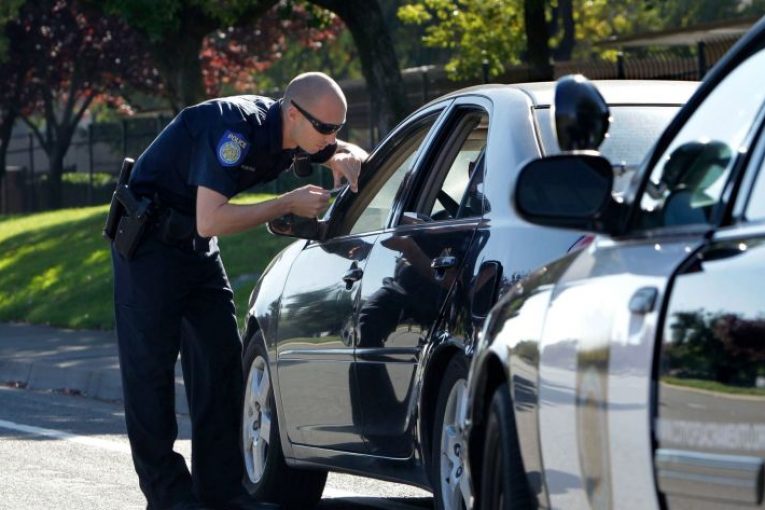

By Esha Kher
NASHVILLE, TN – The Policing Project at the New York University School of Law has released an “assessment” of traffic stops and policing strategies in Nashville—which may mirror other cities—that discusses the costs and benefits of using traffic stops to fight crime, the racial disparity in traffic stops and recommendations to help improve police-community engagement and policing in Nashville.
The Policing Projects assessment was commissioned by the Nashville Mayor’s Office in response to the longstanding tensions around police-community relations, including the 2016 Gideon’s Army report indicating racial disparities in traffic stops and the shooting of Jocques Clemmons by the Nashville Police Department.
The organization is devoted to increasing front-end democratic accountability and in this assessment evaluates Nashville’s traffic stop strategies and related racial disparities using their traffic stop data work conducted in collaboration with the Stanford Computational Policy Lab (SCPL) and data from the Metropolitan Nashville Police Department (MNPD).
The assessment was carried out with a two-pronged approach: a cost-benefit analysis of the Metropolitan Nashville Police Department’s traffic stop practice and a broader community conversation about community-police relations by suggesting that the city create a Steering Committee.
For many years the MNPD has employed a strategy of making a large number of traffic stops in high crime areas in an effort to reduce crime.
“In 2017, MNPD conducted approximately 250,000 traffic stops—approximately 458 stops for every 1,000 driving-age residents,” the SCPL report stated. “Nashville makes more than twice the number  of stops per capita than Raleigh or Charlotte, and more than five times the number
of stops per capita than Raleigh or Charlotte, and more than five times the number
in Austin and Columbus.”
In an effort to assess the cost-benefit balance and effectiveness of these policing strategies in reducing crime, the assessment looked at four aspects: racial disparities in traffic stops, explanation for these racial disparities, traffic stops as an effective crime reduction tool, and the social costs of these stops.
The report found that racial disparities can be observed through the differences in data between the stop rates for the Black versus white population of Nashville.
“In 2017, the per capita stop rate was 44 percent higher for black drivers than for white drivers [for moving violations],” the SCPL report stated. “The per capita stop rate for Black drivers was 68 percent higher for non-moving violations.”
The report then went on to explain and understand the causes and intentions racial disparities.
The first conclusion made was that officers go where the crime is, therefore, officer deployment patterns help explain the racial disparity in inter-neighborhood traffic stops .
“Nashville officers do make more non-moving violation stops in high crime neighborhoods, regardless of their racial composition,” stated the SCPL team. “That is, stop rates in higher crime, predominantly white neighborhoods, are comparable to stop rates in higher crime, predominantly non-white neighborhoods.”
The within-neighborhood disparities , however, can be explained by implicit or explicit biases on the part of officers.
“For example, lower-income residents may drive older cars, or may lack the resources to get broken tail lights or plate-lights repaired as quickly as other drivers. They also may be more likely to have expired tags. If lower-income residents tend to be disproportionately Black, this could explain at least some of the remaining disparity,” expanded SCPL.
The report then turned to the third question of whether traffic stops are an effective crime reduction tool. While existing theories say that stops could act as a deterrent to stop would be offenders, the SCPL found that traffic stops don’t have an impact on long-term or short-term crime trends.
“As the number of traffic stops declined between 2012 and 2017, crime rates remained quite flat,” according to the SCPL report. “In some weeks, officers made an above average number of stops—and crime indeed went down. But sometimes crime went down without any change in the number of stops. And sometimes crime would go up despite the stops.”
Additionally, the report found that non-moving violation stops rarely lead to an arrest, the recovery of drugs or weapons.
“For every 1,000 non-moving violation stops, just over two percent (or 21) resulted in an arrest, or the recovery of drugs or other contraband. An additional 61 stops (6.1 percent) resulted in a misdemeanor citation for a non-drug related charge,” according to SCPL’s report.
The report concludes from these findings that there aren’t any crime-fighting benefits in MNPD’s strategy of proactive traffic stops. The report emphasizes that because there aren’t any benefits, all social costs should be avoided altogether.
The social costs that should be avoided when it comes to traffic stops include “the lost time of the driver, psychological costs of an unwelcome encounter with the police, dignity costs felt by those who perceived the stop as imposed for illegitimate racial reasons, and loss of trust in particular communities from the negative perceptions of the stops,” according to the report.
Since the report shows that traffic stops are not at all an effective crime-fighting tactics the report suggests other ways.
“It could reduce the number of equipment and registration stops, and direct officer resources to more productive strategies that could potentially lead to greater reductions in crime, while strengthening the relationship between MNPD and the communities it serves”, said the report.
In the final part of the report the Policing Project shared a set of recommendations that relate traffic stops, policing, and public safety.
The first recommendation was that the MNPD should promote traffic safety rather than crime through traffic stops, but overall to reduce the number of traffic stops.
“Given that there do not appear to be any crime reduction benefits to stops, we encourage MNPD to focus traffic enforcement efforts in areas where traffic safety is of particular concern—and to direct crime-reduction resources toward more successful crime-fighting strategies,” recommended the report.
The report also suggests that less discretion be given to precinct commanders to pursue their own enforcement strategies.
“Although discretion may have its benefits, for example in terms of fostering individual initiative, the amount of such discretion in Nashville is uncommon in our experience and may hinder system-wide change,” read the report.
Emphasis was placed on a new model of neighborhood policing in communities suffering from high crime in the recommendations.
“Neighborhood policing is based on the philosophy that officers ought to be familiar with and engaged with people in the neighborhood they police, and work collaboratively with those residents to achieve public safety in a just and effective way,” detailed the report.
Finally, the report outlines steps that the MNPD and Nashville should take to increase front-end accountability, including that the MNPD’s policy manual should be put on the web so that anyone may access its policies and that the MNPD’s critical policies should be subject to policy reviews, especially for aspects of Use of Force and stops and searches such as consent searchers.
Similarly, MNPD’s training around things like use of force, procedural justice and community engagement should be subject to review. Lastly, body cameras should be adopted.
The Policing Project report concludes by reiterating that the overall aim of the recommendations is that “the community and MNPD work together to ‘co-produce’ public safety for all of Nashville,” concluded the report.
 Esha Kher is an undergraduate student at UC Davis studying Political Science and Computer Science, hoping to pursue a career in corporate law. She is passionate about legal journalism and political advocacy that provokes new perspectives and sparks conversation among the public.
Esha Kher is an undergraduate student at UC Davis studying Political Science and Computer Science, hoping to pursue a career in corporate law. She is passionate about legal journalism and political advocacy that provokes new perspectives and sparks conversation among the public.
To sign up for our new newsletter – Everyday Injustice – https://tinyurl.com/yyultcf9
Support our work – to become a sustaining at $5 – $10- $25 per month hit the link: